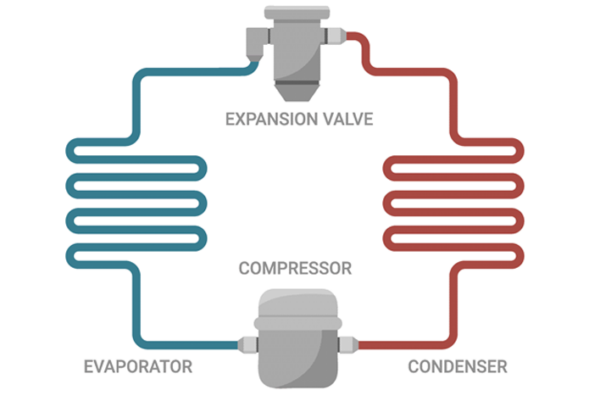Understanding Condenser Coils: Function and Importance
As summer approaches, it’s crucial to understand the components that keep our spaces cool. One such vital part is the condenser coil.
A condenser coil plays a critical role in air conditioning systems. Located outdoors, usually within the condensing unit, this component is designed to release the heat collected from inside buildings into the surrounding atmosphere. It works closely with another key component, the evaporator coil, which is positioned indoors within the air handler unit.
Here’s how it functions: the evaporator coil draws warm indoor air over it using a blower fan. Inside the evaporator coil, the refrigerant absorbs this heat, turning from a liquid into a gas and cooling the air in the process. The heated refrigerant gas then moves outside to the condenser coil. Here, another blower fan pushes outdoor air across the coil, causing the refrigerant to release its heat and revert to a high-pressure liquid state. This cooled liquid then goes through an expansion valve before returning to the evaporator coil to start the cycle again.

Without the condenser coil, the air conditioning system would struggle to remove the heat effectively, leading to inefficient cooling and higher energy costs. Regular maintenance is essential to ensure the condenser coil operates optimally. Cleaning debris and ensuring proper airflow around the coil can extend its lifespan, which typically ranges from 10 to 20 years depending on usage and environmental conditions.
For those looking to enhance durability and efficiency, upgrading from all-aluminum microchannel coils to copper tube and aluminum fin coils can make a significant difference. These upgraded coils not only improve performance but also simplify repairs if needed. For instance, a Carrier AquaSnap chiller equipped with copper tube and aluminum fin coils demonstrates enhanced reliability and efficiency (see image below).

Investing in quality components and regular upkeep can significantly boost the longevity of your HVAC system. Whether you're a homeowner or facility manager, understanding these core elements ensures your air conditioning remains effective and cost-efficient year-round.
MAINTENANCE AND UPGRADES
To maximize the life of your condenser coil, consider these tips:
- Regularly clean the coil to prevent dust and dirt buildup, which can hinder heat exchange efficiency.
- Inspect the fins for damage and straighten them if bent to maintain optimal airflow.
- Ensure the system has adequate drainage to avoid moisture-related issues.
By following these steps, you can enjoy consistent cooling performance while reducing the risk of costly repairs down the line.
PTFE Fibedglass Open Mesh Conveyor Belt
We select fine fiberglass Or Kevlar as basic weaving material, coated with excellent PTFE resin to make it into various PTFE open mesh conveyor belts
Ptfe Fibedglass Open Mesh Conveyor Belt,Ptfe Coated Open Mesh Belt,Ptfe Fiberglass Open Mesh Belt,Non-Sticky Ptfe Coated Open Mesh Belt
Taixing Yingxing Composite Material Co.,Ltd , https://www.ptfecnyx.com